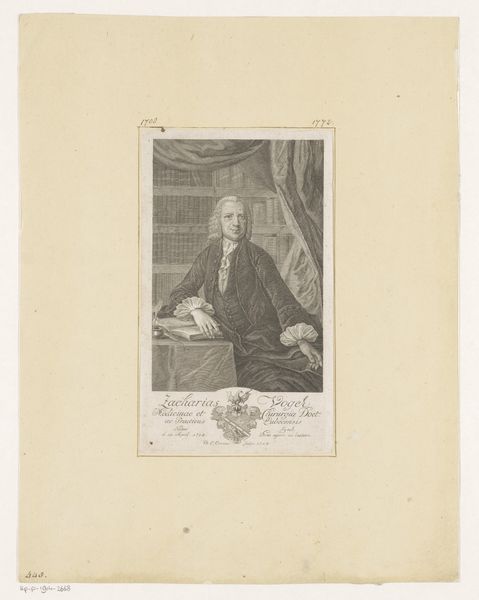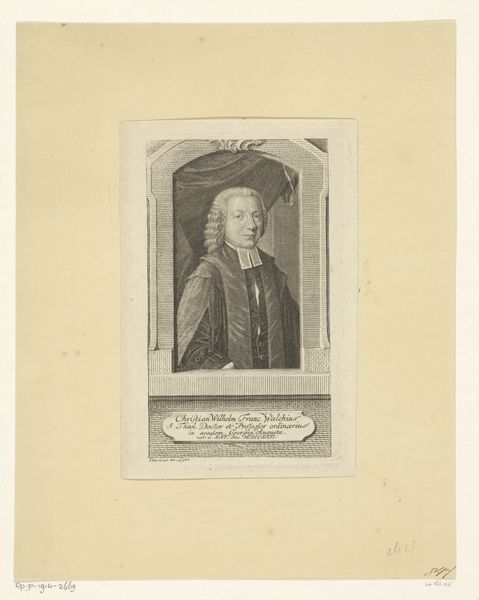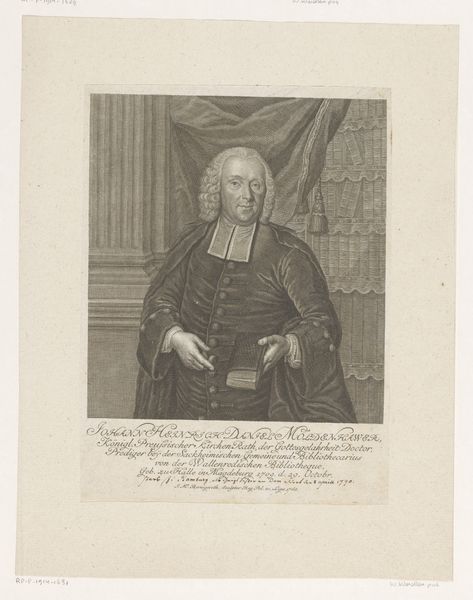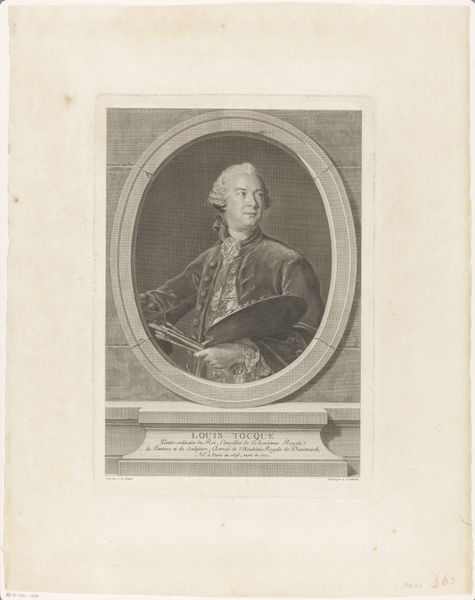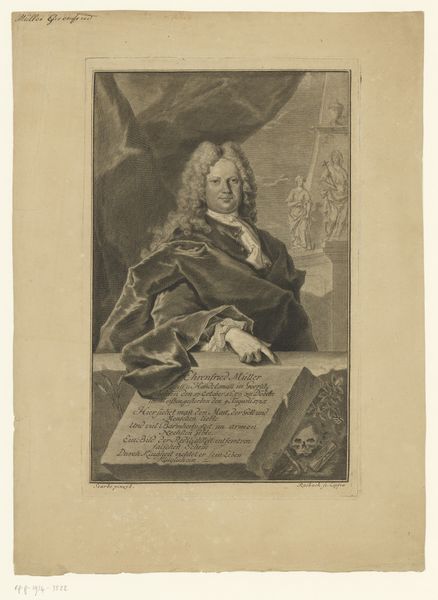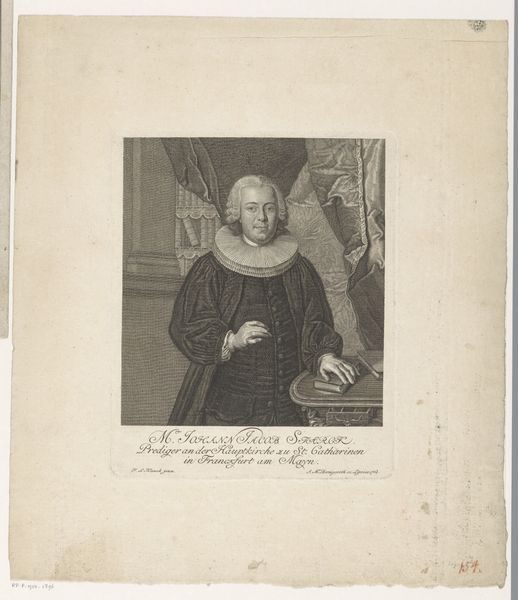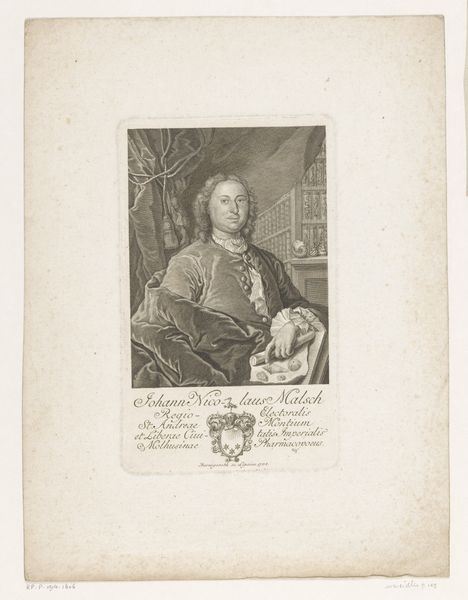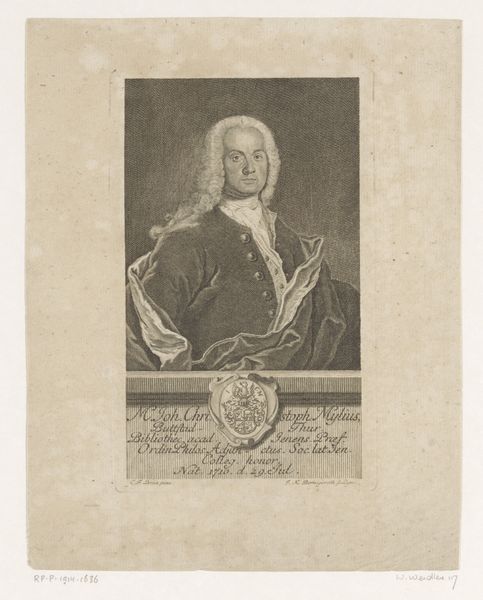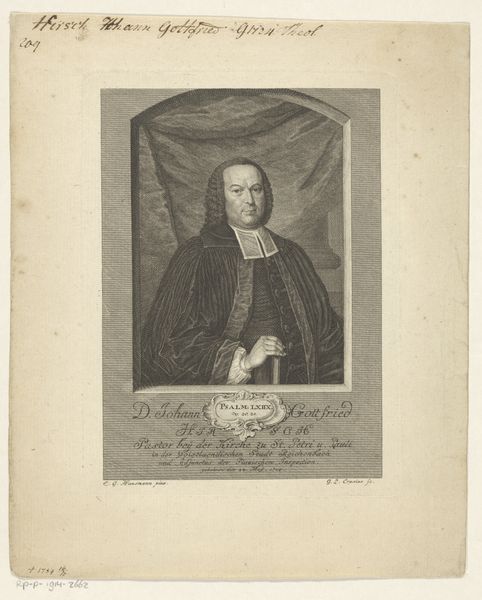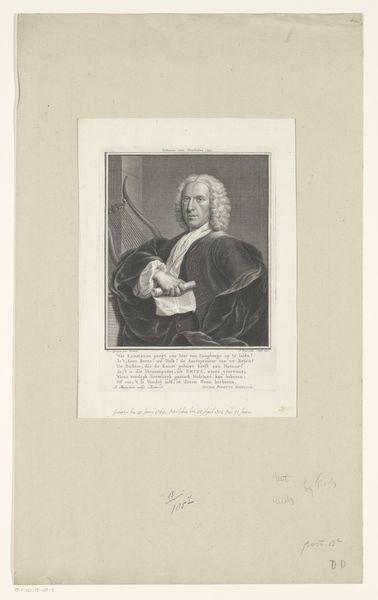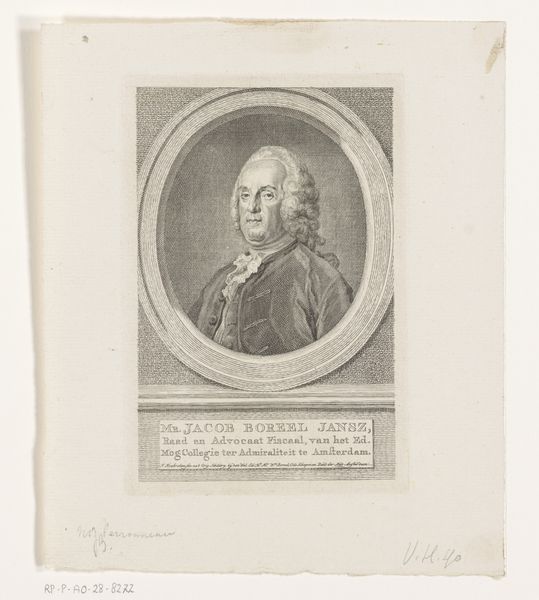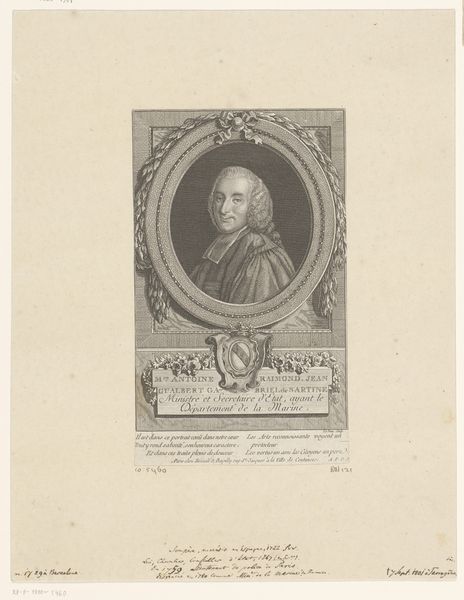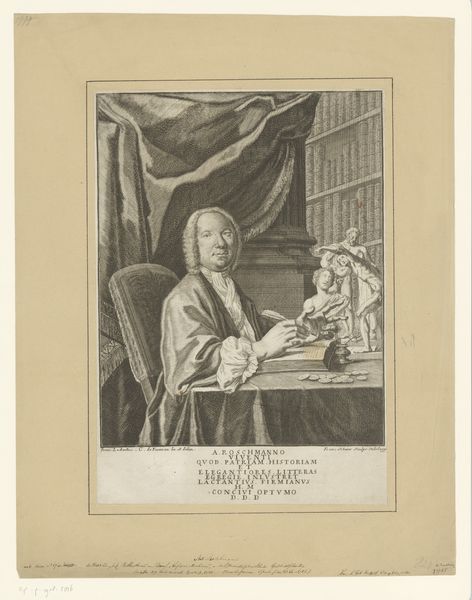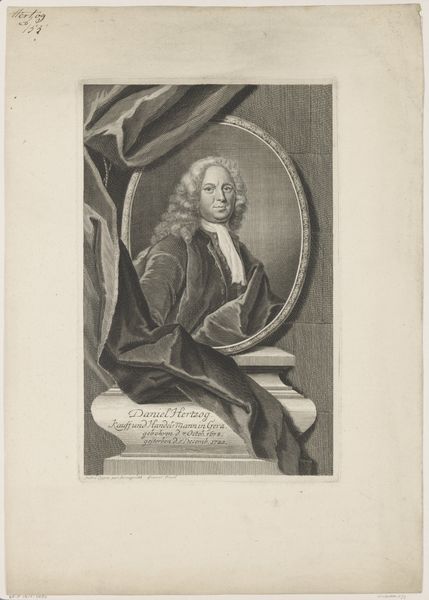
drawing, graphic-art, print, paper, engraving
#
portrait
#
drawing
#
graphic-art
#
light pencil work
#
baroque
# print
#
book
#
old engraving style
#
paper
#
pencil work
#
engraving
Dimensions: height 168 mm, width 95 mm
Copyright: Rijks Museum: Open Domain
Curator: This engraving, created around 1760, is titled *Portret van Johann Hinrich Pratje* by Johann Martin Bernigeroth and resides here at the Rijksmuseum. I'm immediately struck by the density of the text beneath the image and how that affects my reading of it. Editor: It certainly grounds the image, doesn’t it? Without that long description, this portrait has quite a somber feeling. There's a gravitas in his expression. Curator: And I think that connects deeply with how societal structures during this period elevated certain figures, mostly men like Pratje, to positions of considerable power and influence within religious and governmental spheres. This engraving, made on paper, acts almost as a certificate, or perhaps a promotional piece to assert dominance within social hierarchies. The way it's created—using a medium accessible to a broader public—implies dissemination and reinforces visibility of those in authority. Editor: That's interesting. I tend to think about the Baroque era and often find art reflecting the glory of its subject; the scale and theatrical gestures aim to invoke admiration. Yet here, we encounter Pratje presented with what seems to be more restraint. The lines are sharp and controlled, his posture composed; nothing exuberant comes forth. It's an intentional demonstration of self-mastery. What purpose do you suspect pieces such as this served? Curator: Portraiture back then wasn’t simply about memorializing appearance but affirming status. As 'General Superintendent,' Pratje would want to maintain, through controlled imagery, the serious nature of his offices over Bremen and Verden, particularly during moments of political strife or social restructuring within these duchies. This artwork, therefore, plays a role both commemorating the man but also the ideals embodied and implemented via governing agencies connected by Pratje's standing amongst British interests influencing local affairs due directly from familial blood ties between royal lineages. Editor: In closing, then, seeing him holding the manuscript adds another facet: the suggestion of scholarship contributing also as valid pillar towards legitimizing powerful individuals associated closely throughout eras experiencing shifts through royal decrees shaping Europe after various prolonged battles impacting borders throughout jurisdictions now recognized mainly when perusing detailed historical documents.
Comments
No comments
Be the first to comment and join the conversation on the ultimate creative platform.
